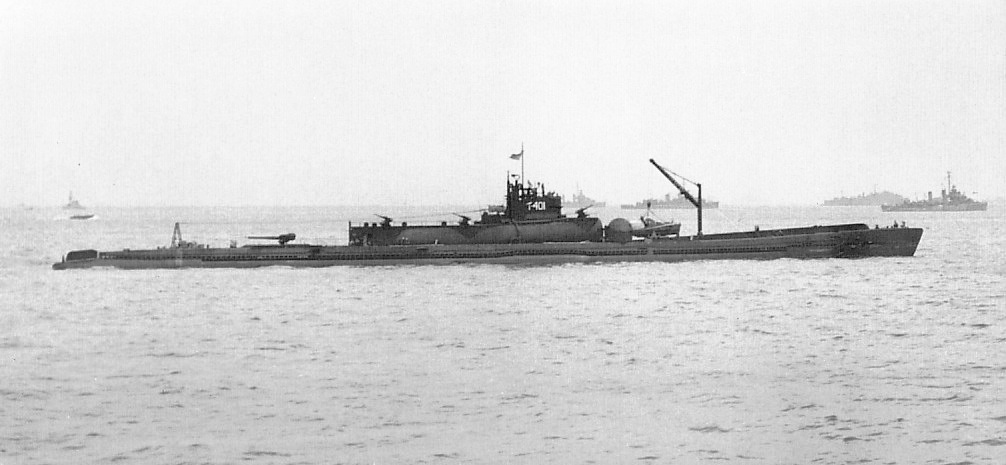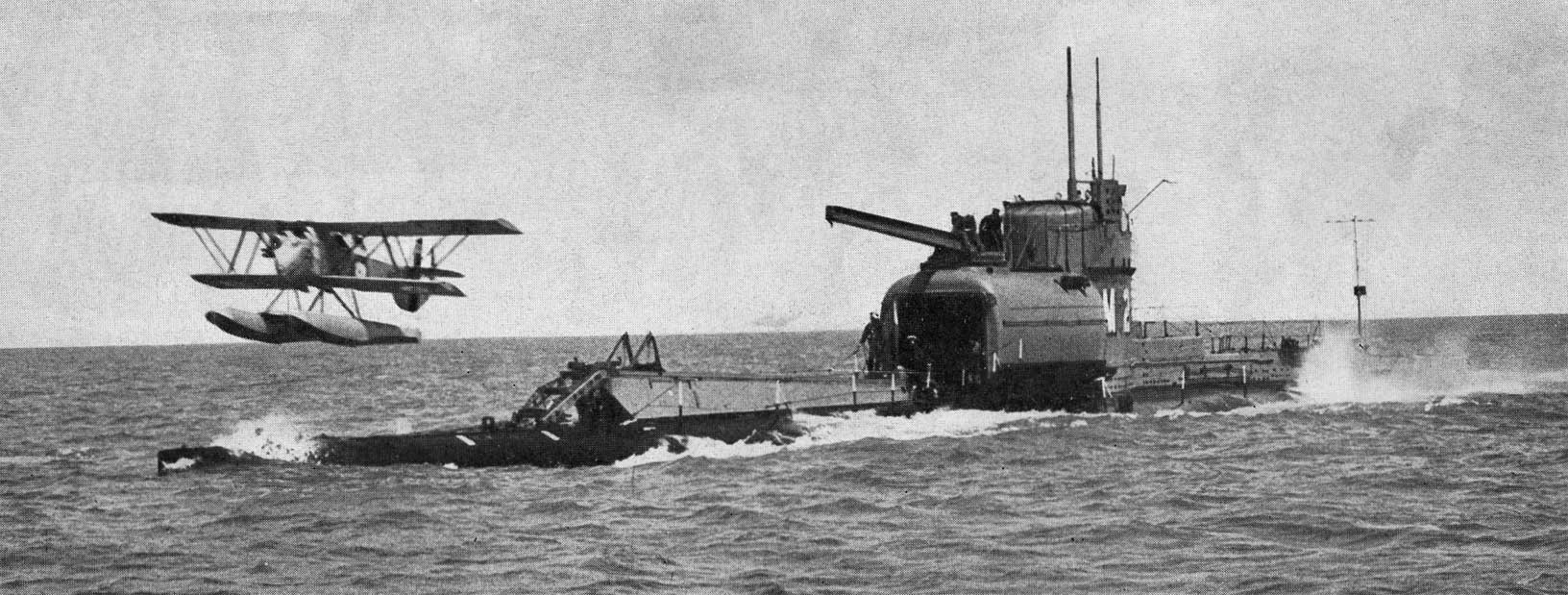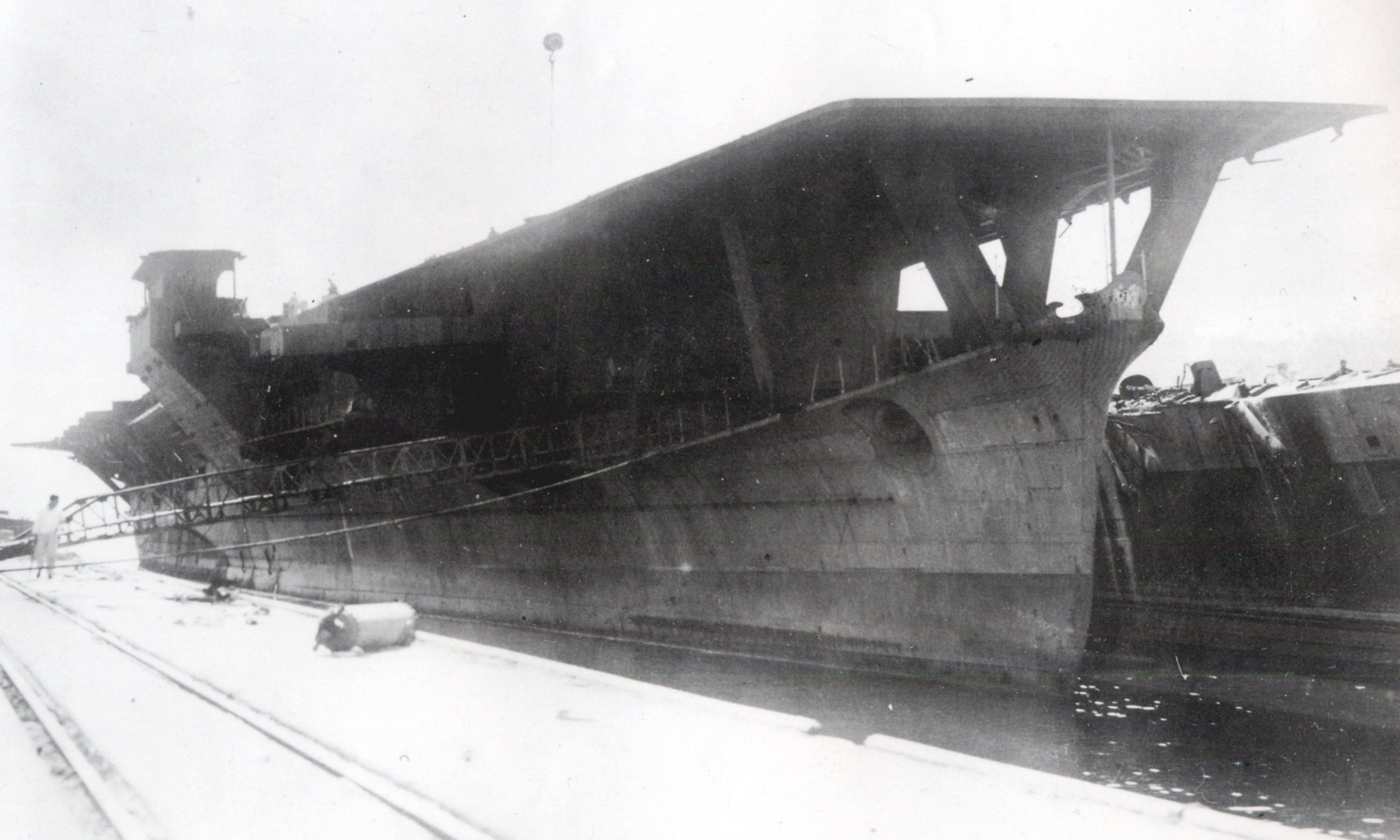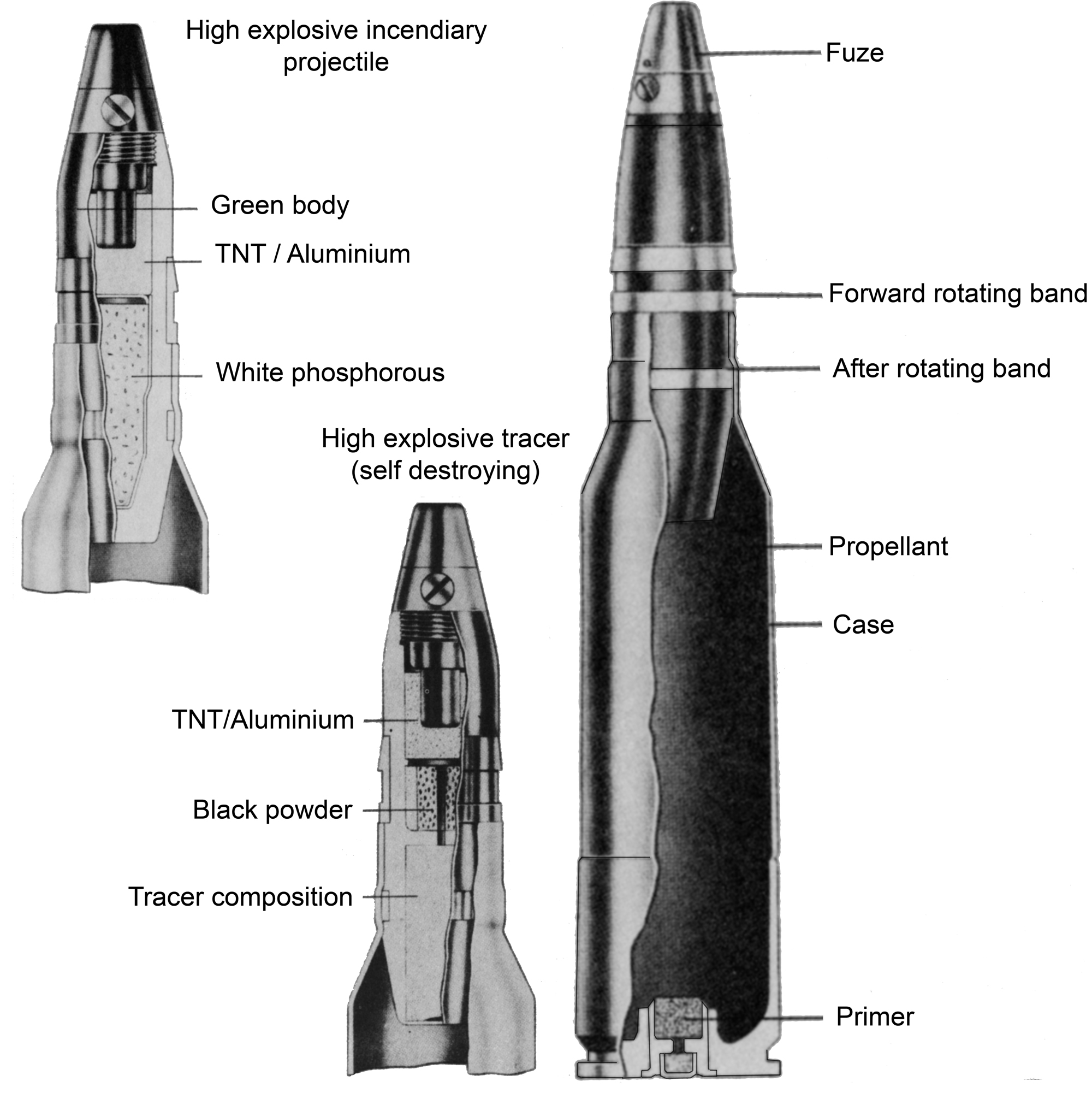|
Sentoku
The Imperial Japanese Navy (IJN) submarines were the largest submarines of World War II and remained the largest ever built until the construction of nuclear ballistic missile submarines in the 1960s. The IJN called this type of submarine . The type name was shortened to . They were submarine aircraft carriers able to carry three Aichi M6A ''Seiran'' aircraft underwater to their destinations. They were designed to surface, launch their planes, then quickly dive again before they were discovered. They also carried torpedoes for close-range combat. The ''I-400'' class was designed with the range to travel anywhere in the world and return. A fleet of 18 boats was planned in 1942, and work started on the first in January 1943 at the Kure, Hiroshima arsenal. Within a year the plan was scaled back to five, of which only three ( I-400 at Kure, and and I-402 at Sasebo) were completed. Origins The ''I-400'' class was the brainchild of Admiral Isoroku Yamamoto, Commander-in-Chief of ... [...More Info...] [...Related Items...] OR: [Wikipedia] [Google] [Baidu] |
Japanese Submarine I-400
was an Imperial Japanese Navy ''Sentoku''-type (or ''I-400''-class) submarine commissioned in 1944 for service in World War II. Capable of carrying three two-seat Aichi M6A1 "Seiran" (Mountain Haze) float-equipped torpedo bombers, the ''Sentoku''-class submarines were built to launch a surprise air strike against the Panama Canal. Until 1965, the ''Sentaku''-type submarines—''I-400'' and her sister ships and —were the largest submarines ever commissioned. Design and description The ''I-400''-class submarines had four diesel engines and carried enough fuel to circumnavigate the world one-and-a-half times. Measuring long overall, they displaced , more than double their typical American contemporaries. Until the commissioning of the United States Navy ballistic missile submarine in 1965, the ''I-400''-class were the largest submarines ever commissioned. The cross-section of the pressure hull had a unique figure-of-eight shape which afforded the strength and stability ... [...More Info...] [...Related Items...] OR: [Wikipedia] [Google] [Baidu] |
Japanese Submarine I-402
was an Imperial Japanese Navy ''Sentoku''-type (or ''I-400''-class) submarine commissioned in 1945 for service in World War II. Originally intended to be a submarine aircraft carrier like her sister ships and , she instead was completed as a submarine tanker, but entered service less than a month before the end of the war and never carried out a tanker voyage. She surrendered to the United States at the end of the war in 1945 and was scuttled in 1946. Until 1965, the ''Sentaku''-type submarines were the largest submarines ever commissioned. Characteristics The ''I-400''-class submarines had four diesel engines and carried enough fuel to circumnavigate the world one-and-a-half times. Measuring long overall, they displaced , more than double their typical American contemporaries and much larger than the most common Japanese submarine of the era, the Type B1, which was feet long and displaced 2,584 tons. Until the commissioning of the United States Navy ballistic missile ... [...More Info...] [...Related Items...] OR: [Wikipedia] [Google] [Baidu] |
Submarine Aircraft Carrier
A submarine aircraft carrier is a submarine equipped with aircraft for observation or attack missions. These submarines saw their most extensive use during World War II, although their operational significance remained rather small. The most famous of them were the Japanese s and the , although small numbers of similar craft were built for other nations' navies as well. Most operational submarine aircraft carriers, with the exception of the ''I-400'' and AM classes, used their aircraft for reconnaissance and observation. This is in contrast to the typical surface aircraft carrier, whose main function is serving as a base for offensive aircraft. Early history (World War I) Germany was the first nation to experiment with submarine aircraft carriers, initiated by the Imperial German Naval Air Service commander Oberleutnant zur See Friedrich von Arnauld de la Perière who commanded a unit of two Friedrichshafen FF.29 reconnaissance seaplanes in Zeebrugge. One of the first U-boa ... [...More Info...] [...Related Items...] OR: [Wikipedia] [Google] [Baidu] |
Sasebo Navy Yard
was one of four principal naval shipyards owned and operated by the Imperial Japanese Navy. History The Sasebo Naval District was established at Sasebo, Nagasaki in 1886, as the third of the naval districts responsible for the defense of the Japanese home islands. After the establishment of the navy base, a ship repair facility was established in 1889 with a dry dock. With the addition of equipment and facilities for ship production by 1897, the "Sasebo Shipyards" were officially established, and renamed the "Sasebo Naval Arsenal" in 1903. Construction of the arsenal was supervised by the French engineer Louis-Émile Bertin. In 1913, a 250-ton crane was installed, and the shipbuilding facilities expanded to permit the construction of large warships. With the mothballing of the Maizuru Naval Arsenal due to restrictions by the Washington Naval Treaty, much of the design and prototype work for new classes of destroyers and torpedo boats formerly done at Maizuru was shifted to ... [...More Info...] [...Related Items...] OR: [Wikipedia] [Google] [Baidu] |
Submarine Aircraft Carrier
A submarine aircraft carrier is a submarine equipped with aircraft for observation or attack missions. These submarines saw their most extensive use during World War II, although their operational significance remained rather small. The most famous of them were the Japanese s and the , although small numbers of similar craft were built for other nations' navies as well. Most operational submarine aircraft carriers, with the exception of the ''I-400'' and AM classes, used their aircraft for reconnaissance and observation. This is in contrast to the typical surface aircraft carrier, whose main function is serving as a base for offensive aircraft. Early history (World War I) Germany was the first nation to experiment with submarine aircraft carriers, initiated by the Imperial German Naval Air Service commander Oberleutnant zur See Friedrich von Arnauld de la Perière who commanded a unit of two Friedrichshafen FF.29 reconnaissance seaplanes in Zeebrugge. One of the first U-boa ... [...More Info...] [...Related Items...] OR: [Wikipedia] [Google] [Baidu] |
Fuse (explosives)
In an explosive, pyrotechnics, pyrotechnic device, or military munition, a fuse (or fuze) is the part of the device that initiates function. In common usage, the word fuse is used indiscriminately. However, when being specific (and in particular in a military context), the term ''fuse'' describes a simple pyrotechnic initiating device, like the cord on a firecracker whereas the term ''fuze'' is used when referring to a more sophisticated ignition device incorporating mechanical and/or electronics, electronic components, such as a proximity fuze for an M107 projectile, M107 artillery shell, magnetometer, magnetic or acoustic signature, acoustic fuze on a sea mine, spring-loaded grenade fuze, pencil detonator, or anti-handling device. History Documented evidence suggests that the earliest fuses were first used by the Song Chinese between the 10th and 12th centuries. After the Chinese invented gunpowder, they began adapting its explosive properties for use in military technology ... [...More Info...] [...Related Items...] OR: [Wikipedia] [Google] [Baidu] |
Magnetic Field
A magnetic field is a vector field that describes the magnetic influence on moving electric charges, electric currents, and magnetic materials. A moving charge in a magnetic field experiences a force perpendicular to its own velocity and to the magnetic field. A permanent magnet's magnetic field pulls on ferromagnetic materials such as iron, and attracts or repels other magnets. In addition, a nonuniform magnetic field exerts minuscule forces on "nonmagnetic" materials by three other magnetic effects: paramagnetism, diamagnetism, and antiferromagnetism, although these forces are usually so small they can only be detected by laboratory equipment. Magnetic fields surround magnetized materials, and are created by electric currents such as those used in electromagnets, and by electric fields varying in time. Since both strength and direction of a magnetic field may vary with location, it is described mathematically by a function assigning a vector to each point of space, cal ... [...More Info...] [...Related Items...] OR: [Wikipedia] [Google] [Baidu] |
Naval Mine
A naval mine is a self-contained explosive device placed in water to damage or destroy surface ships or submarines. Unlike depth charges, mines are deposited and left to wait until they are triggered by the approach of, or contact with, any vessel or a particular vessel type, akin to anti-infantry vs. anti-vehicle mines. Naval mines can be used offensively, to hamper enemy shipping movements or lock vessels into a harbour; or defensively, to protect friendly vessels and create "safe" zones. Mines allow the minelaying force commander to concentrate warships or defensive assets in mine-free areas giving the adversary three choices: undertake an expensive and time-consuming minesweeping effort, accept the casualties of challenging the minefield, or use the unmined waters where the greatest concentration of enemy firepower will be encountered. Although international law requires signatory nations to declare mined areas, precise locations remain secret; and non-complying individ ... [...More Info...] [...Related Items...] OR: [Wikipedia] [Google] [Baidu] |
Diving Plane
Diving planes, also known as hydroplanes, are control surfaces found on a submarine which allow the vessel to pitch its bow and stern up or down to assist in the process of submerging or surfacing the boat, as well as controlling depth when submerged. Bow and stern planes Diving planes are usually fitted in two pairs, the '' bow planes'' at the front of the submarine and the ''stern planes'' at the rear. The stern planes function in much the same way as an aircraft's elevator. As the planes are a long distance fore-and-aft from the hull's centre of buoyancy, they introduce a pitching moment. Ballast tanks within the submarine adjust buoyancy to be neutral, making the boat controllable. The position of the planes controls the pitch of the boat and, with the forward motion of the boat, this controls depth. If not carefully controlled, this could lead to a 'porpoising' motion whereby the planesman continually hunts for a stable combination of depth and pitch. For easier berth ... [...More Info...] [...Related Items...] OR: [Wikipedia] [Google] [Baidu] |
Radar Warning Receiver
Radar warning receiver (RWR) systems detect the radio emissions of radar systems. Their primary purpose is to issue a warning when a radar signal that might be a threat is detected, like a fighter aircraft's fire control radar. The warning can then be used, manually or automatically, to evade the detected threat. RWR systems can be installed in all kind of airborne, sea-based, and ground-based assets such as aircraft, ships, automobiles, military bases. This article is focused mainly on airborne military RWR systems; for commercial police speed detection radar RWR systems, see radar detector. Depending on the market the RWR system is designed for, it can be as simple as detecting the presence of energy in a specific radar band, such as the frequencies of known surface-to-air missile systems. Modern RWR systems are often capable of classifying the source of the radar by the signal's strength, phase and signal details. The information about the signal's strength and waveform can t ... [...More Info...] [...Related Items...] OR: [Wikipedia] [Google] [Baidu] |
25mm Gun
25 mm caliber is a specific size of popular autocannon ammunition. It has also been recently used for the Barrett XM109 anti-materiel rifle. Such ammunition includes the NATO-standard 25×137mm and 25×184mm, the Soviet 25x218mmSR, and the Chinese 25×183mmB. Usage The 25 mm round can be used in both an anti-materiel and anti-personnel fashion. When operating in the anti-personnel role, a 25 mm weapon armed with HE rounds can effectively kill large numbers of opposing troops either in the open or in light fortifications. When operating in the anti-materiel role, a 25 mm weapon armed with armor-piercing rounds can disable many aircraft and vehicles, including some main battle tanks. The US military uses 25 mm weapons in their AV-8B Harrier, AC-130 gunship, M2 Bradley, LAV-25, F-35 Lightning II and as a standard ship-based munition in the Mk 38 autocannon. Types of 25 mm ammunition Several sub-types of the NATO 25 mm ammunition are available—the most com ... [...More Info...] [...Related Items...] OR: [Wikipedia] [Google] [Baidu] |
I-400 Class Deck Compartment Plan , a smartphone
{{Letter- ...
I4, i4, I 4 or I-4 may refer to: Arts, entertainment, and media * '' I-4: Loafing and Camouflage'', a Greek film Military * 1st Life Grenadier Regiment (Sweden) (1816–1927), a Swedish infantry regiment * , a World War II Type J1 submarine of the Imperial Japanese Navy * Life Grenadier Regiment (Sweden) (1928–1997), a Swedish infantry regiment * Tupolev I-4, a 1927 Soviet aircraft Science and technology * I-4 satellite * i4, an integer in XML-RPC Transportation * I4 engine, a piston engine * Interstate 4, an interstate highway in Florida * BMW i4, a German mid-size electric sedan * Interstate Airlines, by IATA airline designator * LB&SCR I4 class, a British locomotive See also * iPhone 4 The iPhone 4 is a smartphone that was designed and marketed by Apple Inc. It is the fourth generation of the iPhone lineup, succeeding the iPhone 3GS and preceding the 4S. Following a number of notable leaks, the iPhone 4 was first unvei ... [...More Info...] [...Related Items...] OR: [Wikipedia] [Google] [Baidu] |









